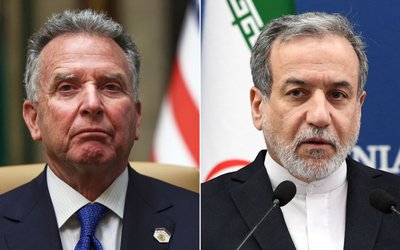More on News


Although the armed conflict dating back to the February of 1996 has long come to an end; Nepal is still to conclude its peace process. As the nation anxiously awaits the new constitution which has already missed two consecutive deadlines, the primary agenda of re-integration of the two armies still stands to be completed. With half of the added time for drafting the constitution having passed us by, it is obvious that the completion of both the ‘peace process’ and the ‘constitution drafting process’ largely depends on Nepal’s success towards re-integration of armed forces.
Demobilization of Combatants vs. Re-Integration of Armed Forces
For the new constitution to be written, it is crucial that certain aspects of the peace process must first come to a logical conclusion. The issue of reintegration of the armed forces should be the first issue towards attaining sustainable peace in Nepal. A sovereign state cannot exist with rival armies. The former Maoist combatants in the cantonments are demobilized combatants who do not have a new identity. Devoid of a new identity, an idle army always carries the potential of reverting back to conflict or at least, threatening to do so. This threat has created suspicion among other parties, and as a result of this, lack of trust has directly/ indirectly hindered negotiations on key issues. Re-integration of the armed forces would provide this ‘new identity’ that could be utilized towards nation building and ending the suspicion of re-igniting conflict once and for all. Therefore, demobilization of combatants has to be followed by re-integration of armed forces at the earliest for Nepal to witness any success in nation building or constitution drafting.
Nicaragua’s Experience with Re-integration of Armies
Out of a post-conflict situation, the Central American nation of Nicaragua was successful in devising the ‘Peace Promoter Network’ by re-integrating the Sadinista and Resistance armies. It was realized that core values of armed forces such as dedication, sacrifice, solidarity, discipline, teamwork were not only limited to armed combats, but were equally important aspects in seeking to rebuild post-conflict nations. It was also witnessed that post-conflict nation building required rehabilitation of relationships and self-images along with infrastructure that had suffered damage during the course of conflict. Hence, rooting the new force in the ‘arts of peace’ was the prime focus when re-integrating the Sadinista and Resistance armies through the “Education and Action for Peace Programme”. The programme was based on coalition building and conflict resolution trainings directed towards handling conflict in non-violent and creative ways. Sharing of experiences through participatory training methodology, open learning processes and human training were integral aspects of the programme in producing peace promoters for post-conflict nation building. Given the association of former combatants with violence in the past, social exclusion had led the former combatants to view themselves as being misused in the conflict as mechanical enforcers of high command decisions. Perhaps the greatest success of the “Peace Promoter Network” was in its ability to give a new identity to the past combatants who were seen as reminders of past violence. Their aspirations, values and functions had now shifted from engagement in combat to promoters of peace.
Nepal’s Choice in Re-Integration of Armed Forces
At this very important juncture of Nepal’s peace process, debates around the issue of re-integration of armies have been limited to ‘conventional structures’ of armed forces- ‘forces with weapons’. Little thought has gone into what the nation would indeed need in future to build itself in the background of the recent conflict. In the brink of a federal constitution with promises unbound- it should be questioned whether our leaders have conceived of generating valuable human resources through a re-integrated national force geared towards implementing these new values and promises. The dying need for even the basic of infrastructures in many regions of Nepal could perhaps be better addressed by adequate human resource being trained and utilized towards development. Similarly, in transitioning to federal State, Nepal would require considerable human resource across sectors in running a three-tier system of governance. Also, long standing issues such as implementation of judicial verdicts and enforcement of non-discriminatory laws in the society can perhaps be better dealt by training the much needed human resource on these fronts. Myopic vision of limiting the re-integrated forces to conventional armed forces will in no way aid the long run demands of nation-building.
Often, the history of a nation may not have been benevolent with events of peace. However in a nation’s life-time, opportunities do present themselves wherein peace can be endorsed as the best alternative. This rare historical opportunity has presented itself in Nepal- ‘to decide how the energy, skill, capability and determination of the youths are to be utilized by the nation’. While re-integrating the army, the current leadership should shift its focus from traditional conceptions of armed forces and move towards the real requirements of building a stable and peaceful post-conflict nation. After all, tools can be imported; but sustainable human resource for running a stable system needs to be generated domestically.



